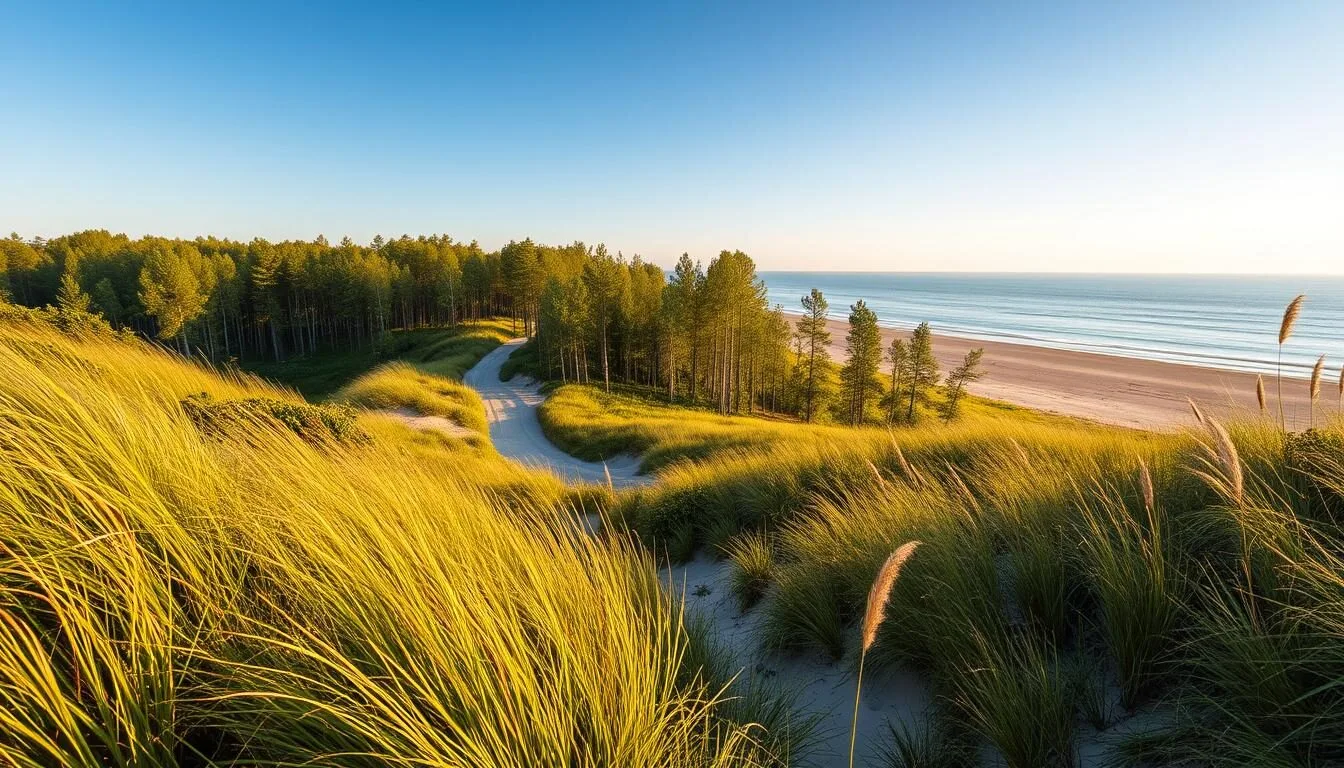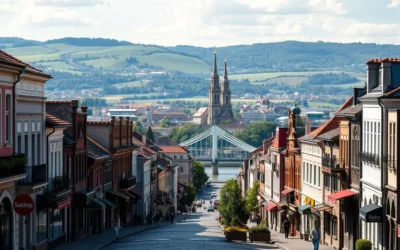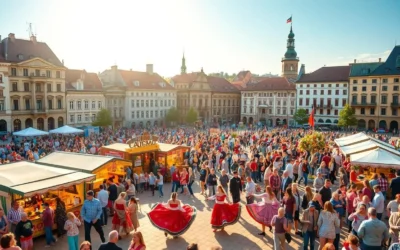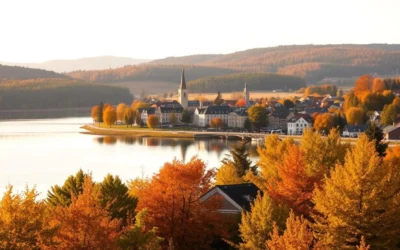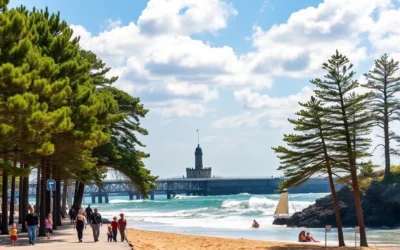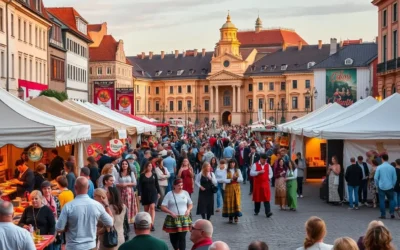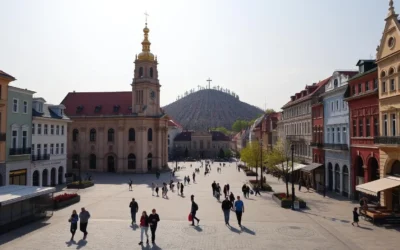✓ Accommodations✓ Flights✓ Rental Cars
You’ve likely heard of some of the world’s most breathtaking natural destinations, but the Curonian Spit is a gem that stands out for its unique landscape and rich history.
This UNESCO World Heritage site is a haven for nature lovers and those fascinated by cultural heritage. Stretching 98 kilometers between the Baltic Sea and the Curonian Lagoon, it boasts towering sand dunes, pristine beaches, and charming fishing villages.
As you explore this remarkable destination, you’ll uncover a landscape shaped by the sea, wind, and human activity. With its diverse natural and cultural features, the Curonian Spit is a place where you can connect with nature and experience the local history and culture.
The Unique Charm of Curonian Spit National Park
Discover the enchanting Curonian Spit, a haven of natural beauty. This unique destination is characterized by its diverse landscape, shaped by the constant interaction of wind, water, and sand. The Curonian Spit represents a remarkable geological formation, approximately 3 million years old, created from glacial moraine.
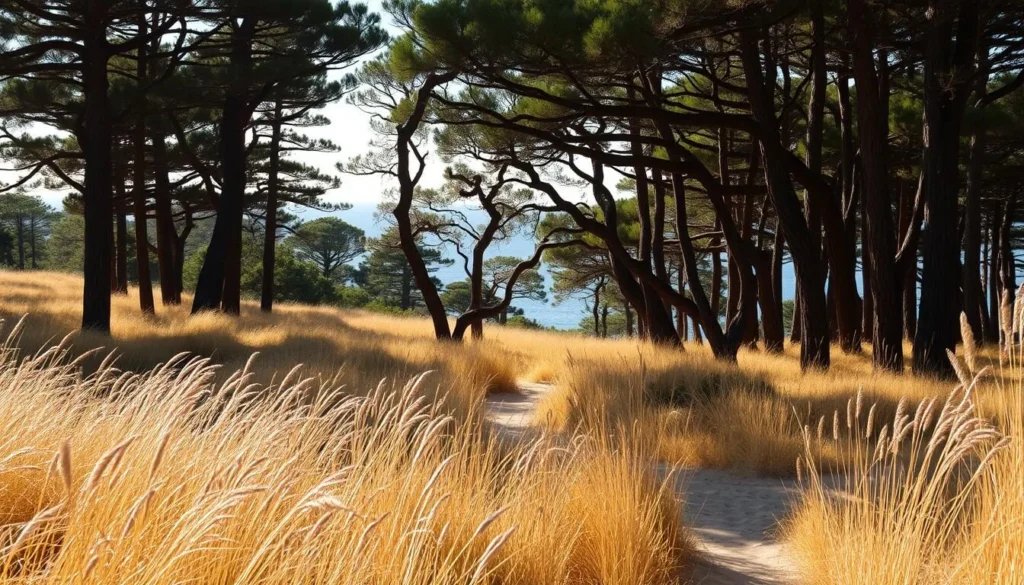
A UNESCO World Heritage Site
The Curonian Spit is not only a natural wonder but also a site of significant cultural importance, designated as a UNESCO World Heritage Site. With a history dating back to the 13th Century, it was once home to the Order of Teutonic Knights. Local mythology adds a layer of cultural richness, attributing its creation to a giant named Neringa. This blend of natural and cultural heritage makes the Curonian Spit a fascinating place to explore.
The Geological Marvel Between Baltic Sea and Curonian Lagoon
The Curonian Spit’s unique geographical position, separating the Baltic Sea from the Curonian Lagoon, creates a fascinating microclimate and diverse ecosystem. The narrow peninsula is home to impressive dunes, a testament to the dynamic nature of this environment. The continued existence of the spit depends on a delicate balance of sand deposition and transportation, making it a living, constantly evolving landscape.
| Feature | Description |
|---|---|
| Geological Formation | Approximately 3 million years old, created from glacial moraine |
| Bodies of Water | Separates the Baltic Sea and the Curonian Lagoon |
| Ecosystem | Diverse and dynamic, with a unique microclimate |
When to Visit Curonian Spit National Park
The Curonian Spit National Park is a year-round destination, but the experience varies greatly depending on the season you choose to visit. Understanding the characteristics of each season will help you plan your trip according to your preferences.
Summer Season: Peak Time for Beach Activities
Summer is the peak tourist season at Curonian Spit, with warm weather making it ideal for beach activities. You can enjoy swimming, sunbathing, and various water sports on the Baltic Sea and Curonian Lagoon sides. However, it’s also the busiest time, with more tourists and higher prices for accommodations.
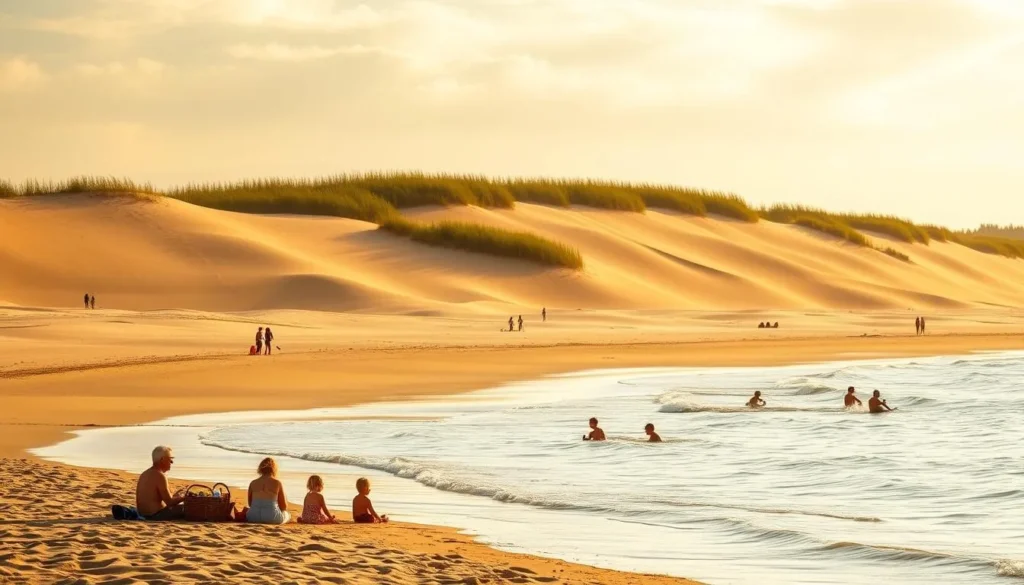
Off-Season Advantages: Tranquility and Natural Beauty
Visiting during the spring (April-May) or fall (September-October) offers a different but equally rewarding experience with fewer tourists and a more tranquil atmosphere. The off-season reveals the Curonian Spit’s natural beauty in different lights—spring brings blooming vegetation, while autumn paints the landscape in golden hues.
| Season | Characteristics | Activities |
|---|---|---|
| Summer | Warm weather, peak tourist season | Beach activities, water sports |
| Spring/Autumn | Fewer tourists, tranquil atmosphere | Bird watching, hiking, exploring villages |
| Winter | Peaceful, snow-dusted dunes | Photography, serene landscapes |
You’ll find that accommodation prices are significantly lower outside the summer months, making it an excellent option for budget-conscious travelers. Additionally, bird watchers particularly appreciate the spring and fall migration seasons when the spit becomes a crucial stopover for numerous bird species.
How to Reach the Curonian Spit
Located near Klaipeda, the Curonian Spit is a short ferry ride away from the mainland. The most common way to reach the Curonian Spit is by taking a ferry from Klaipeda.
Ferry Services from Klaipeda
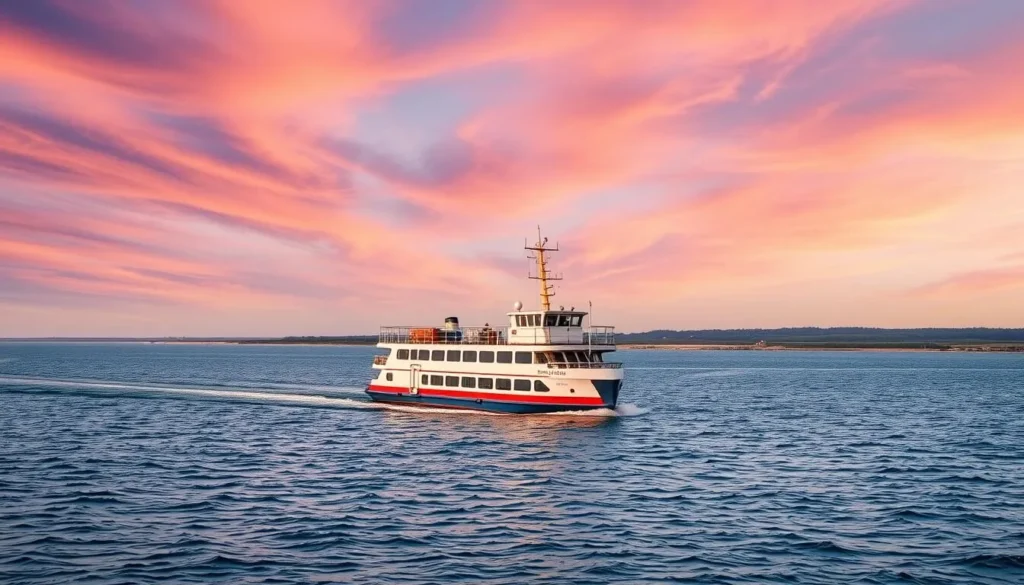
The ferry service from Klaipeda to Smiltyne, the gateway to the Curonian Spit, is frequent and convenient. You can easily transport your vehicle or travel as a foot passenger.
Getting Around the National Park
Once you’ve arrived on the Curonian Spit, you have several transportation options for exploring this linear national park. The entire spit is connected by a single main road running its length, making navigation straightforward whether you’re driving or cycling.
- Renting a bicycle is one of the most popular and environmentally friendly ways to explore the area, with dedicated cycling paths connecting all the main attractions and villages.
- If you arrive without a car, there’s a public bus service that connects the main settlements of Smiltyne, Juodkrante, and Nida, though service may be limited outside the summer season.
- For those who prefer guided experiences, several tour companies in Klaipeda and on the spit itself offer organized day trips to the main points of interest.
- Walking is ideal for exploring individual areas in depth, but given the spit’s length (over 50km on the Lithuanian side alone), it’s not practical for covering the entire territory in a single trip.
By choosing the right options for your trip, you can enjoy the beauty of the Curonian Spit to the fullest, whether you’re in the city of Klaipeda or exploring the national park.
Exploring the Magnificent Sand Dunes
The Curonian Spit National Park boasts some of the most spectacular sand dunes you’ll ever see. These natural wonders are a highlight of any visit to the area, offering breathtaking views and unique landscapes.
Pardanis Dune: The Moving Giant
Pardanis Dune is one of the most iconic landmarks on the Curonian Spit, known for its impressive height and constant movement. This majestic sand dune is a result of natural forces shaping the landscape over centuries. As you stand at the top, you can feel the sand shifting beneath your feet, a reminder of the dynamic nature of this environment.
Vecekrug Dune: The Highest Point on the Spit
Vecekrug Dune, also known as the Old Inn Dune, stands at an impressive 67.2 meters, making it the highest point on the Curonian Spit and the second-highest sand dune in Europe. Unlike Pardanis Dune, Vecekrug is now fully covered with pine trees, thanks to a successful stabilization effort that began in 1803. This transformation has turned what was once a threatening sand dune into a picturesque forested hill, offering spectacular vistas over the surrounding pine forests from its viewing platform.
The contrast between the forested Vecekrug Dune and the still-active Pardanis Dune provides a fascinating glimpse into the spit’s ongoing environmental management. You can explore these dunes and appreciate the unique characteristics of each, from the shifting sands of Pardanis to the stabilized slopes of Vecekrug, all within the beautiful area of the Curonian Spit National Park.
The Dead Dunes and Nagliai Nature Reserve
The Dead Dunes and Nagliai Nature Reserve offer a glimpse into the natural and historical significance of the Curonian Spit. This unique area is characterized by its stark, lunar-like landscape shaped by the forces of nature.
The Story of Villages Buried Under Sand
The Nagliai Nature Reserve holds a fascinating history of villages buried under the shifting sand and dunes. As you explore the reserve, you’ll uncover the stories of how these villages were consumed by the relentless movement of the dunes, a process that continues to this day.
Hiking Trails Through the Reserve
The reserve features well-maintained hiking trails that allow you to safely explore the Dead Dunes. Your journey begins on a 300-meter wooden boardwalk, accessible to visitors of all abilities, leading you into the heart of this otherworldly landscape. Beyond the boardwalk, you can venture onto the sand itself, though it requires suitable footwear due to the loose terrain. Interpretive signs along the trail provide context about the buried villages and the ecological processes shaping this dynamic environment. For the best views, climb to the viewpoints atop the dunes for breathtaking vistas of the Curonian Spit.
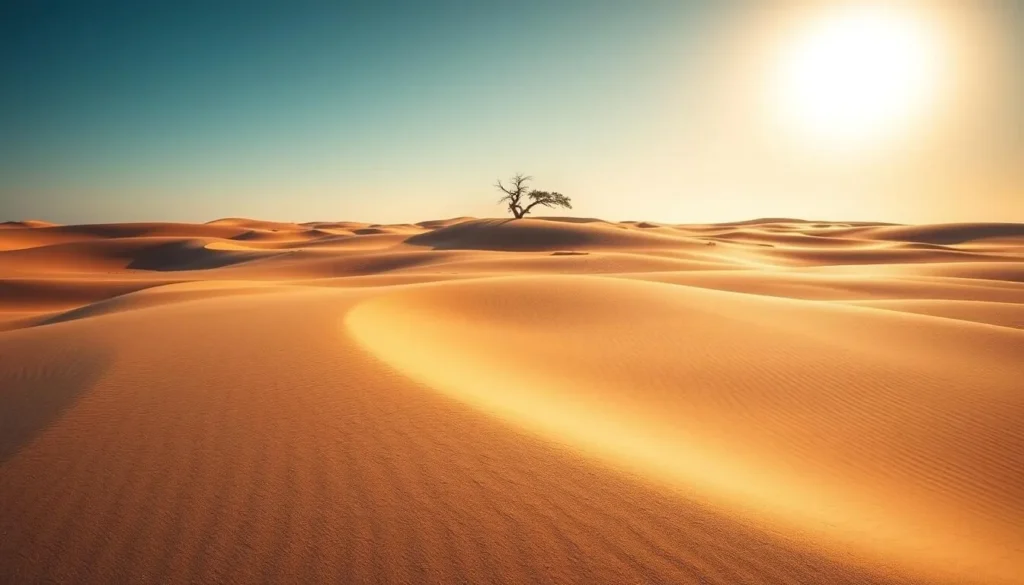
Discovering the Hill of Witches in Juodkrante
Nestled in the heart of the Curonian Spit, the Hill of Witches in Juodkrante is a captivating site that weaves together mythology and nature. As you explore this enchanting destination, you’ll uncover the rich cultural heritage of Lithuania through its unique wooden sculptures.
Mythological Wooden Sculptures
The Hill of Witches is renowned for its collection of mythological wooden sculptures that depict frightening and grotesque images from Lithuania’s pagan past. These carvings are not just artistic expressions but also provide insight into the country’s fascinating history. Many of the sculptures reference ancient Baltic deities, nature spirits, and folkloric characters that were central to pre-Christian Lithuanian beliefs and customs.
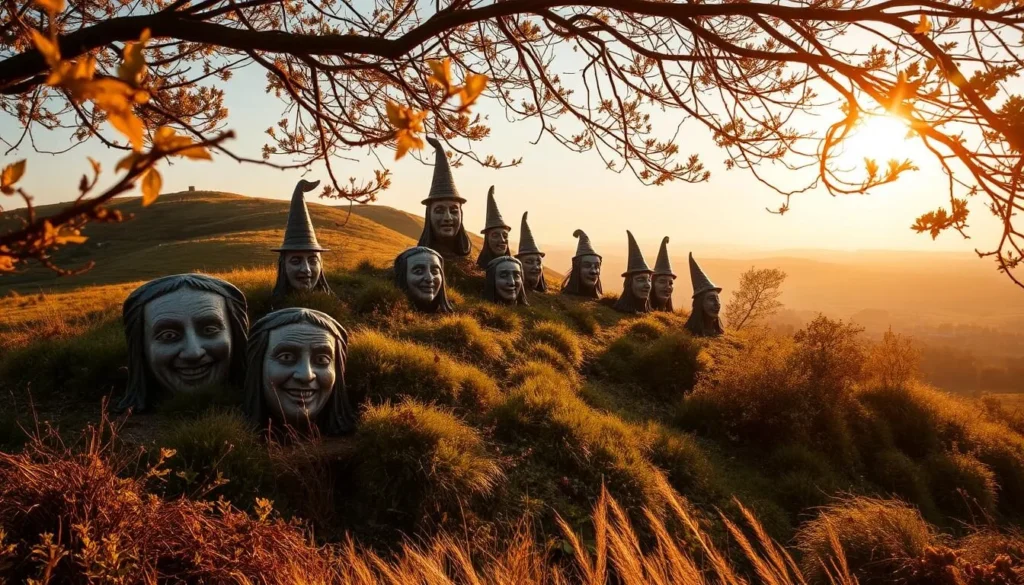
Lithuanian Folklore and Pagan Traditions
The Hill of Witches is deeply rooted in Lithuania’s pagan traditions, offering a glimpse into the country’s cultural identity. The site has historical significance as a place where pagan rituals were once performed, particularly during important seasonal celebrations like the summer solstice. Today, locals continue to gather here during St. Jonas Day (Midsummer Festival) to honor these ancient traditions, reflecting the pagan reverence for nature that remains an important aspect of Lithuanian cultural identity.
| Cultural Significance | Historical Importance | Modern-Day Celebrations |
|---|---|---|
| Reflection of pagan traditions | Site of ancient rituals | St. Jonas Day celebrations |
| Insight into Lithuania’s past | Showcases ancient Baltic deities | Honoring cultural heritage |
Beaches of the Curonian Spit
As you explore the Curonian Spit, you’ll discover that its beaches are as varied as they are beautiful, with distinct characteristics on the Baltic and lagoon sides. The Curonian Spit’s unique geography creates two vastly different beach experiences.
Baltic Sea Beaches: Golden Sands and Amber Hunting
The western side of the Curonian Spit faces the Baltic Sea, offering beaches with golden sands and an exciting opportunity for amber hunting after storms. These beaches are known for their rugged beauty and are often characterized by strong winds and rougher seas, making them ideal for those seeking an adventurous beach experience during the summer months.
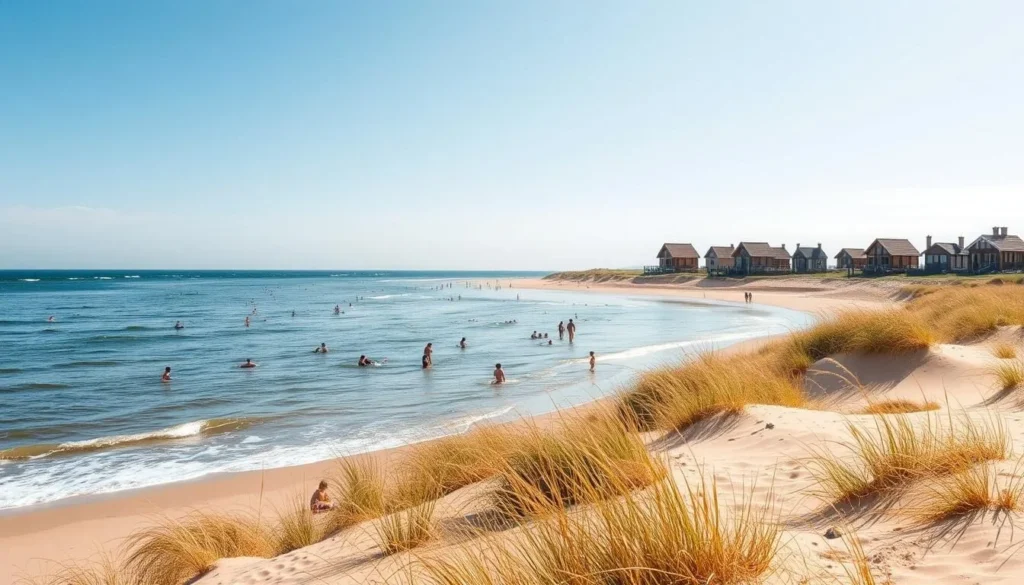
Lagoon Side Beaches: Calm Waters and Scenic Views
In contrast, the eastern shores facing the Curonian Lagoon offer a tranquil beach experience with calmer and shallower water. These beaches are perfect for families with young children or those looking for a more relaxed swimming experience. The lagoon’s protected environment makes it ideal for paddleboarding, kayaking, and other gentle water activities. Visitors can also enjoy picturesque views of the mainland Lithuania coastline across the lagoon.
- The lagoon beaches warm up more quickly in summer, making them ideal for swimming.
- They offer scenic views of the forested spine of the spit and the mainland coastline.
- These beaches are less crowded than their Baltic counterparts, providing a more tranquil experience.
- Sunrise enthusiasts will appreciate the magical atmosphere on the lagoon side.
Curonian Spit National Park, Lithuania: Best Things to Do for Nature Lovers
As a nature lover, you’ll find the Curonian Spit National Park to be an exciting destination, full of thrilling experiences. The park offers a diverse range of activities that allow you to immerse yourself in its unique nature and landscape.
Bird Watching at the Cormorant and Heron Colony
The Curonian Spit is a significant stopover point for migratory birds, making it a paradise for bird watchers. Visit the cormorant and heron colony to witness these magnificent creatures up close. The colony is home to a large number of birds, and the experience is both thrilling and educational.
Cycling Through Pine Forests
Cycling is one of the best ways to experience the beauty of the Curonian Spit. The park’s flat terrain and dedicated bicycle paths make it an ideal destination for cycling enthusiasts. As you pedal through the pine forests, you’ll be surrounded by the refreshing scent of resin and the soothing sounds of nature.
The main cycling route spans approximately 50 kilometers, connecting all major settlements and attractions. You can rent bicycles in Nida and other villages, with many shops offering one-way rental services. This allows you to ride your bike back to town while enjoying the scenic views.
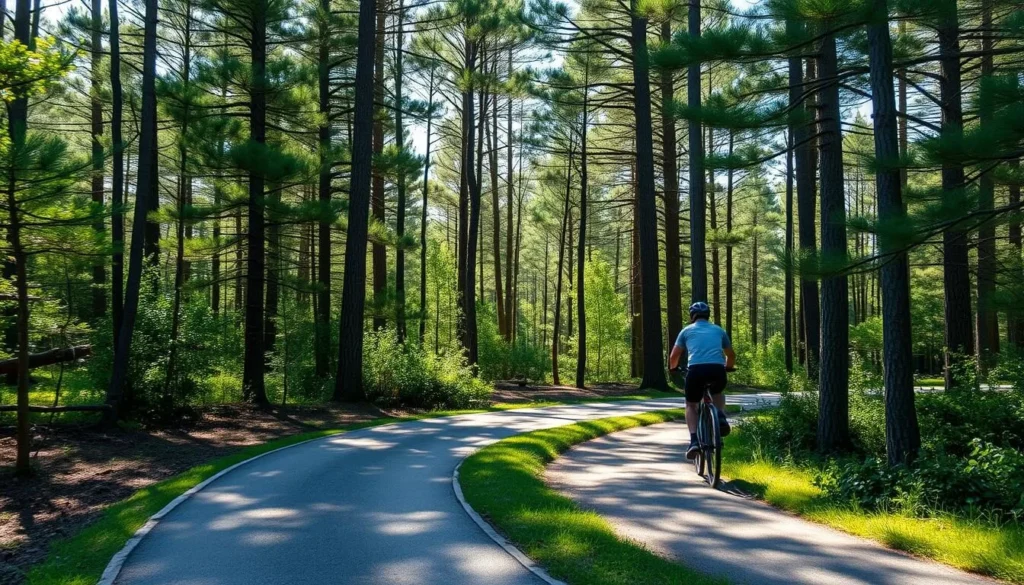
Exploring the Charming Villages
The Curonian Spit is home to several quaint villages, each with its own unique character and attractions. As you explore these villages, you’ll experience the authentic essence of the region.
Nida: The Cultural Heart of the Spit
Nida is the largest village on the Curonian Spit and is known for its cultural significance. You can visit traditional houses and explore the local art scene. Nida is a town that embodies the spirit of the Curonian Spit, with its beautiful landscapes and rich history.
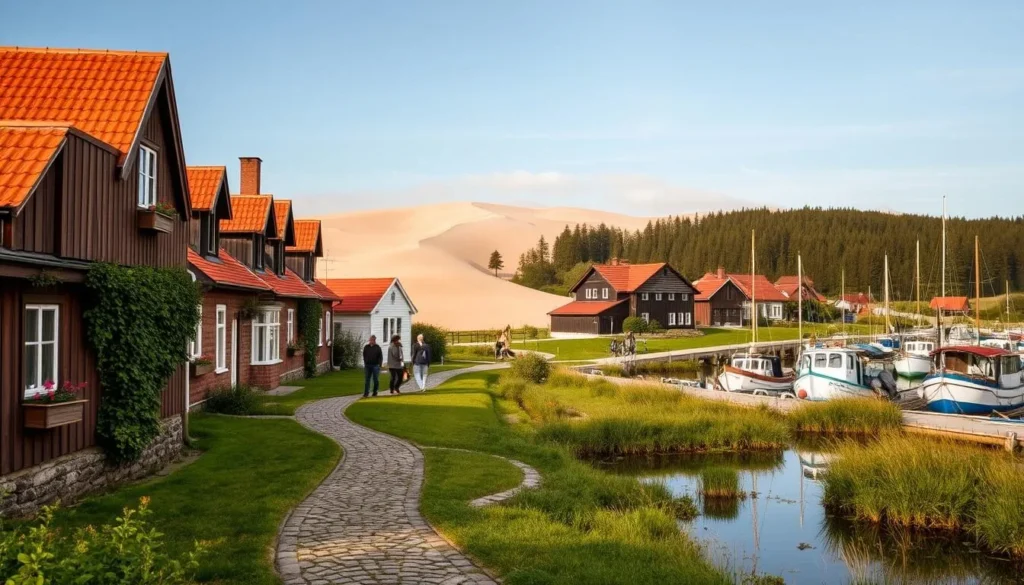
Juodkrante and Smiltyne: Hidden Gems
Juodkrante and Smiltyne are two other notable villages on the Curonian Spit. Juodkrante is famous for its Hill of Witches, a mysterious sculpture park, and its elegant 19th-century villas inspired by French Riviera architecture. It’s a great place to visit for those looking for a more relaxed atmosphere and excellent attractions. Smiltyne, on the other hand, serves as the gateway to the national park and features popular beaches and the Lithuanian Sea Museum and Dolphinarium.
| Village | Main Attractions |
|---|---|
| Nida | Cultural events, traditional houses |
| Juodkrante | Hill of Witches, 19th-century villas |
| Smiltyne | Beaches, Lithuanian Sea Museum and Dolphinarium |
Cultural and Historical Attractions
The Curonian Spit is not just a natural wonder; it’s also a treasure trove of cultural and historical attractions waiting to be explored. As you visit the area, you’ll discover a rich tapestry of history and culture that adds depth to your travel experience.
Thomas Mann Memorial Museum
The Thomas Mann Memorial Museum is a must-visit for literature enthusiasts. Located in Nida, this museum is dedicated to the life and works of the renowned German author who spent his summers in the town. Today, the museum showcases a collection of personal belongings, photographs, and memorabilia that offer a glimpse into Mann’s life and writing.
Nida Ethnographic Cemetery
The Nida Ethnographic Cemetery provides a poignant look at the region’s cultural heritage. This historic cemetery is the final resting place for many of Nida’s former residents, with graves that reflect the town’s history and traditions. As you wander through the cemetery, you’ll gain a deeper understanding of the local culture and the people who lived there.
Amber Gallery and Museum
The Amber Gallery and Museum is a unique attraction that celebrates the region’s famous “Baltic gold.” Housed in a traditional fisherman’s cottage, the museum offers an interactive look at the history and formation of amber. You can explore exhibits on amber processing, see artisans at work, and even participate in a workshop to create your own amber souvenir. The attached boutique sells exquisite, handmade amber jewelry, making it a great place to find a special memento of your visit.

Water Activities on the Curonian Spit
Water activities on the Curonian Spit are diverse, ranging from thrilling sports on the Baltic Sea to serene experiences on the Curonian Lagoon. The unique geography of the spit, with its contrasting bodies of water, offers something for every kind of water enthusiast.
Kitesurfing and Windsurfing on the Baltic Side
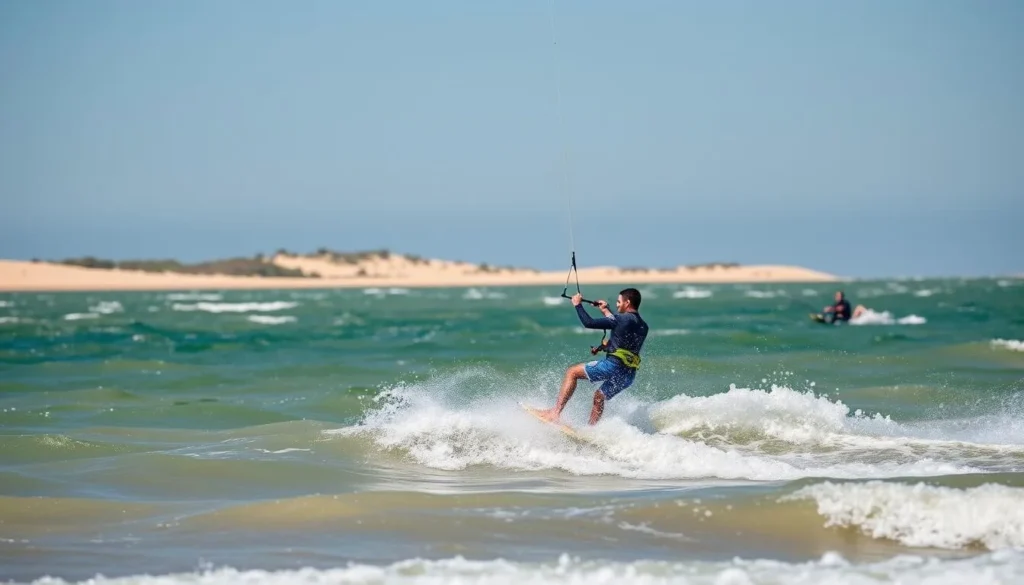
The Baltic side of the Curonian Spit is renowned for its consistent winds, making it an ideal location for kitesurfing and windsurfing. Enthusiasts can enjoy the thrill of gliding across the waves, taking advantage of the strong breezes that characterize this area.
Boating and Fishing on the Lagoon
The calm waters of the Curonian Lagoon provide the perfect setting for more relaxed water activities, including recreational boating, kayaking, and traditional fishing. During summer, boat rentals are available in Nida and Juodkrante, allowing you to explore the lagoon at your own pace. You can also join a guided kayak tour for a more intimate experience or try your hand at fishing with a temporary permit.
- The calm waters of the Curonian Lagoon are ideal for boating, kayaking, and traditional fishing.
- Fishing has been a cornerstone of local communities for centuries; join a fishing tour to experience this tradition.
- Boat rentals are available in Nida and Juodkrante during the summer.
- Guided kayak tours offer an eco-friendly way to explore the lagoon’s tranquil waters.
- Obtain a temporary fishing permit to catch species like pike, perch, and bream.
- Sample the local specialty of freshly smoked fish, prepared using traditional methods.
Photography Spots and Scenic Viewpoints
With its unique geography, the Curonian Spit provides exceptional opportunities for capturing stunning photographs. The spit offers a diverse range of landscapes, from the serene Curonian Lagoon to the dramatic Baltic Sea coast.
Nida Lighthouse Panoramic Views
The Nida Lighthouse is a must-visit spot for photographers, offering panoramic views of the surrounding landscape. From the top, you can capture breathtaking shots of the spit, with the Baltic Sea on one side and the Curonian Lagoon on the other. The lighthouse is particularly photogenic during the golden hour, when the soft light enhances the natural beauty of the surroundings.
Sunset and Sunrise Photography Locations
The Curonian Spit is renowned for its spectacular sunrises and sunsets. For sunrise photography, head to the eastern shores along the Curonian Lagoon near Nida, where you can capture serene compositions with fishing boats and wooden piers. For sunset enthusiasts, the western Baltic beaches offer dramatic skies and silhouettes of kitesurfers against the golden horizon. The Parnidis Dune is another prime location, offering stunning contrasts between the golden sand, dark pine forests, and blue waters on both sides.
Some other great spots to consider include the bicycle and hiking paths that wind through the pine forest, offering interesting perspective shots. You can also climb the sand dunes south of Nida for a great vantage point. Additionally, the Witch Hill in Juodkrante is a unique spot, featuring intricate wooden sculptures that can be captured in dramatic black and white photos.
- The Curonian Spit offers a unique advantage for landscape photography, allowing you to capture both sunrise and sunset from the same narrow strip of land.
- Explore the pine forest paths for intimate landscape compositions, with shafts of light filtering through the trees.
- Visit the Dead Dunes during the “blue hour” for moody, minimalist compositions.
Local Cuisine and Dining Experiences
You can savor the essence of Lithuanian cuisine on the Curonian Spit, where local restaurants serve traditional dishes with a twist. The dining scene is refreshingly free from international chains, offering authentic local cuisine in charming, often family-run establishments.
Traditional Smoked Fish Delicacies
The Curonian Spit is renowned for its smoked fish, a delicacy that you should not miss. Traditional smoking methods are still used, giving the fish a unique flavor. Look for restaurants that serve freshly smoked fish, often caught from the local waters.
In Nida, waterfront restaurants like Nidos Seklyčia and Kuršių Kiemas offer not only excellent seafood but also stunning views of the lagoon.
Best Restaurants in Nida and Juodkrante
Beyond fish, traditional Lithuanian dishes like cepelinai (potato dumplings stuffed with meat), šaltibarščiai (cold beetroot soup), and kugelis (potato pudding) showcase the country’s hearty cuisine. In Juodkrante, Pamario Takas serves excellent local fare in a relaxed setting.
During summer, many restaurants offer outdoor seating, but reservations are recommended for dinner, especially in July and August when the villages are at their busiest.
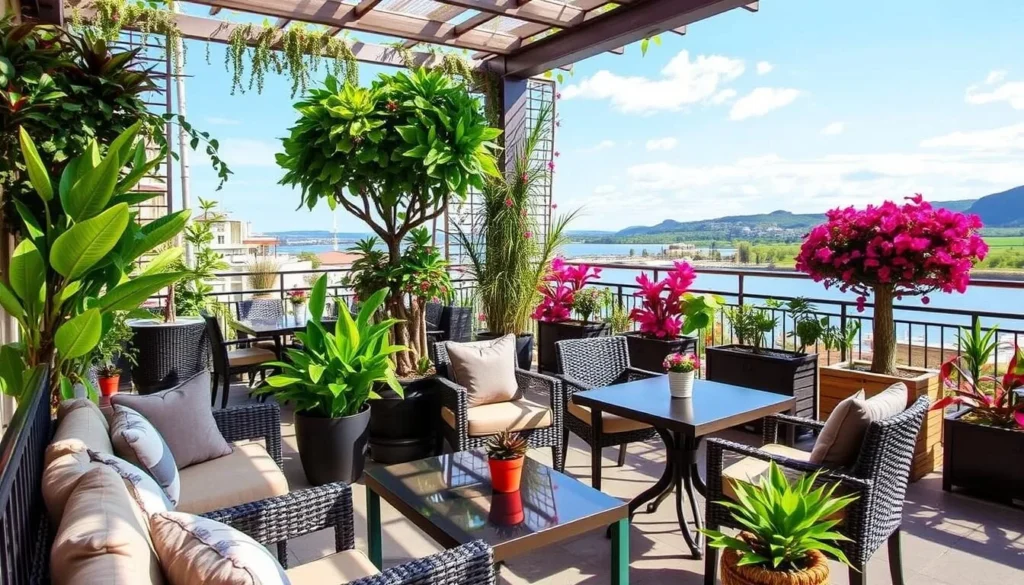
Accommodation Options on the Curonian Spit
When planning your trip to the Curonian Spit, choosing the right accommodation is crucial for a comfortable and enjoyable experience. The area offers various options, ranging from hotels and guesthouses to alternative lodging.
Staying in Nida: Hotels and Guesthouses
Nida is a charming town on the Curonian Spit, known for its beautiful beaches and tranquil atmosphere. You can find a range of hotels and guesthouses in Nida that cater to different budgets. For a luxurious stay, consider booking a hotel that offers amenities like spas and fine dining. For a more authentic experience, guesthouses are a great option, providing a homey atmosphere and local insights.
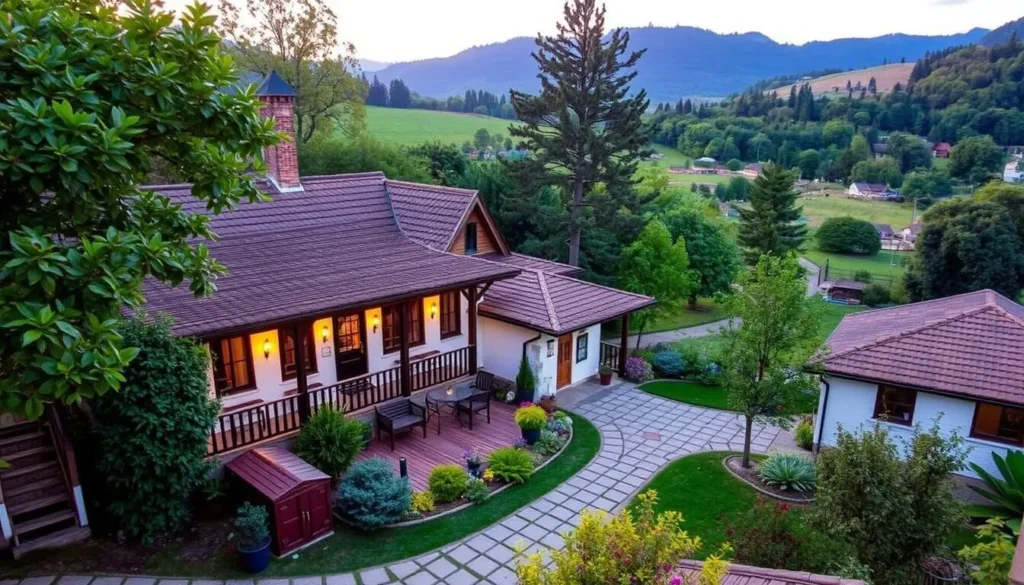
Alternative Lodging in Klaipeda
If you prefer not to stay on the Curonian Spit itself, Klaipeda is a convenient alternative. This charming city offers a variety of accommodation options, from budget-friendly guesthouses to luxury hotels like the Amberton Hotel, which is located next to the Baltic Sea. The Green Park Hotel is another popular choice, situated just minutes from the ferry port that takes you to the Curonian Spit.
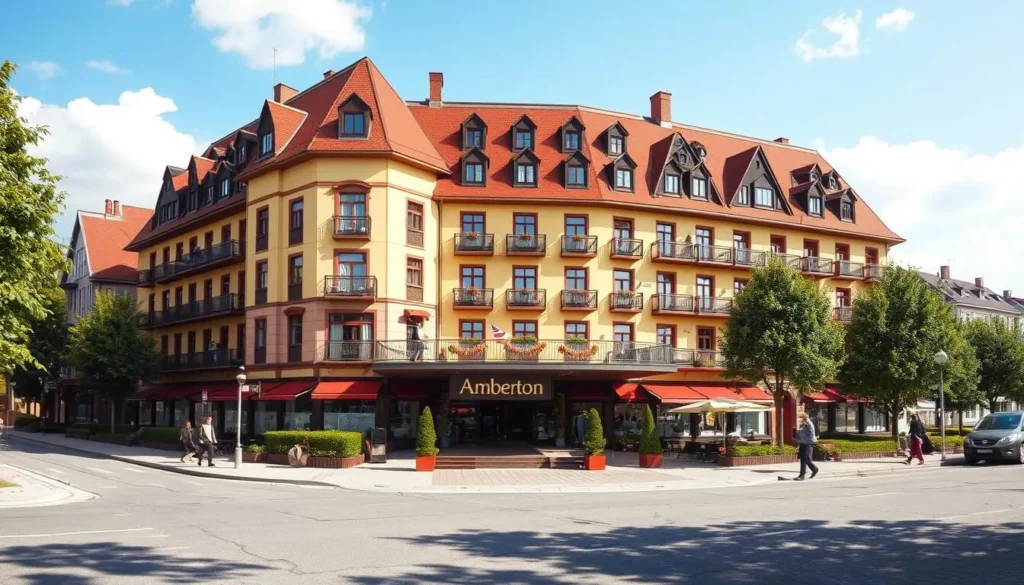
Staying in Klaipeda provides several advantages, including a wider range of accommodation options and better value for money. You’re also close to the city’s cultural attractions and transportation hubs, making it an ideal base for exploring the Curonian Spit and beyond.
Conclusion: Planning Your Perfect Visit to the Curonian Spit
The Curonian Spit, with its pristine nature and cultural heritage, offers an unforgettable experience for travelers. Whether you plan to stay on the peninsula or take a day trip from Klaipeda, visiting the Curonian Spit is a must on any Lithuania trip.
To make the most of your visit, consider allocating at least two full days to explore the spit thoroughly. The shoulder seasons of late May to early June or September are ideal for a more comfortable experience, with pleasant weather and smaller crowds.
Prioritize the highlights: the Parnidis Dune for panoramic views, the Dead Dunes for their otherworldly landscape, and at least one charming village to experience local culture. Whether you’re interested in nature, beaches, or cultural heritage, the Curonian Spit is a destination that promises a uniquely preserved landscape showcasing the Baltic region at its most captivating.
With its seemingly endless sand dunes, unspoiled beaches, and lovely villages, the Curonian Spit is truly one of Europe’s most beautiful destinations. Plan your visit to this extraordinary Curonian Spit and enjoy the best of Lithuania’s natural treasures.
—
The above is subject to change.
Check back often to TRAVEL.COM for the latest travel tips and deals.
